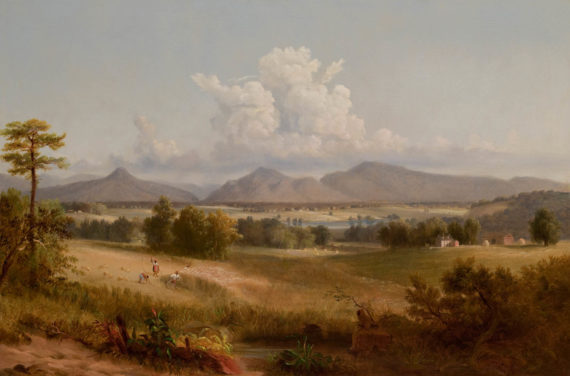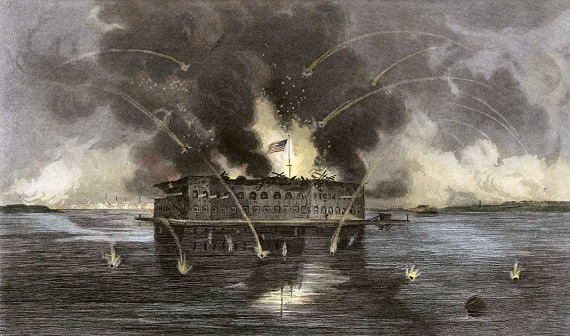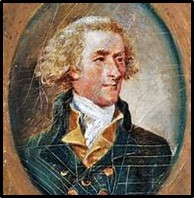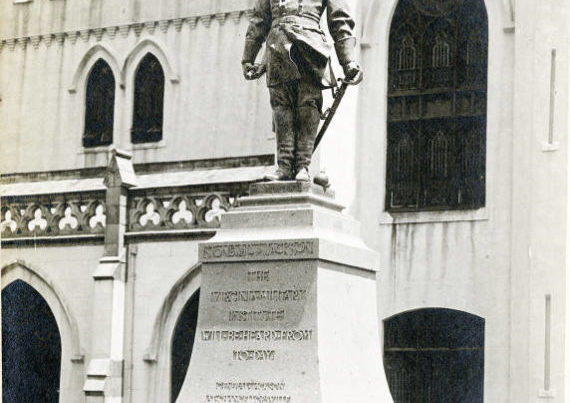
Southeast Virginia is a region rich in history, from the earliest colonial times to today’s modern military. Cape Henry welcomes visitors today, just as it did the Virginia Company colonists in 1607, just before they settled at Jamestown. First Landing State Park commemorates where the colonists first entered Chesapeake Bay, seeking a site for settlement. One of Virginia’s oldest and most popular state parks, it offers not only a glimpse into history but also many recreational opportunities.
A hub of military bases, the Virginia Beach, Chesapeake, Portsmouth, and Norfolk area South of the James River-Hampton Roads-Chesapeake Bay waterfront is encircled by wildlife refuges, state parks and seashores. Back Bay National Wildlife Refuge, False Cape State Park, and Currituck National Wildlife Refuge are on the Atlantic coast along the Virginia-North Carolina border. A little further inland, Northwest River Preserve offers more wildlife habitat, on waters which feed into the Currituck Sound between the tidewater mainland and the outer banks. The Great Dismal Swamp Wildlife Refuge and State Park, straddles the state lines. An 11 mile trail for hiking, bicycling, or horseback riding follows along the remains of the Dismal Swamp Canal, which connected the Albermarle Sound in North Carolina with the Chesapeake Bay in Virginia.
The Chesapeake Bay Bridge-Tunnel is a 17 mile engineering feat which connects the Norfolk area to the Eastern Shore (Delmarva Peninsula) while allowing shipping to pass from the Atlantic into the Chesapeake through 2 channels which pass over the roadway in the tunnels beneath. Near the Virginia Beach entrance to the bridge-tunnel are several historic areas, near Ft. Story and Cape Henry. First Landing Cross marks the place where the first permanent settlers first touched shore on April 26, 1607. Cape Henry Lighthouse (1791) offer views of the ocean from very historic ground, and was authorized by the first Congress. Nearby, a statue of Admiral de Grasse overlooks the site of the Battle Off the Virginia Capes. On September 5, 1781, a French fleet defeated the British fleet sent to relieve Lord Cornwallis’ army at Yorktowne. This ensured General Washington and the Comte de Rochambeau would be able to force Cornwallis to surrender.
Fort Story dates from 1914, and was an integral part of the defense system of the Chesapeake Bay area for many years. Currently it is used for Army amphibious operations and logistics training. Batteries 121, 225 (Battery Cramer), 226 were built in 1942 to defend coastal areas with 6 inch guns. There are also Nike Missile sites in the area, indeed throughout the region, which have been deactivated. Old buildings and bunkers are often repurposed.
Virginia Beach, offers many attractions nearby. The Atlantic Ocean provides a scenic backdrop for pictures of the Neptune Statue. The Virginia Aquarium and Marine Science Center is a good introduction to the area’s marine life, and also includes an aviary. Boat tours of the area are also a good way to experience the natural habitat of the area. The Old Seatack Coast Guard Station (c. 1880) is now The Virginia Beach Maritime HIstorical Museum. The Military Aviation Museum, Amphibious Museum, Jet Observation Park and Naval Aviation Monument Park would be good stops for anyone interested in military history.
The Thoroughgood House (c. 1636) is possibly the oldest brick house in the nation. Nearby the Lynnhaven House (former Boush House) also dates from the 17th Century. Guides in period attire give visitors a glimpse of life in the past. Pembroke Manor (c.1764) was built by Jonathan Saunders and his wife Elizabeth Thoroughgood on land she inherited which had been part of Adam Thoroughgood’s 1635 land grant. His son, Cap, Jonathan Saunders, was a Loyalist and was evicted from the manor for his loyalty to the crown. He settled in Nova Scotia after the war. Old Donation Episcopal Church (c. 1736) was the third church to serve Lynnhaven Parish. The parish first held services in 1637 in Adam Thoroughgood’s home. As population shifted,Old Donation Church lost members, and by 1856 Emmanuel Church served the area. A Virginia law which stated churches formerly owned by the Church of England, and not used within one year, reverted back to the Commonwealth. Members from Emmanuel started to make a pilgrimage every year. Even a fire in 1882 did not destroy everything. In 1911 funds were raised and, starting with brick walls left from the fire, Old Donation was rebuilt.
The Francis Land House (c.1720) is a Georgian house on the exterior, but Federal style on the interior. Guided tours show early 19th century life when Francil Land VI lived here. Ferry Farm House is a Federal style house built with slave labour on the river.
As tension between the Colonies and Britain grew, Lord Dunmore fled from Williamsburg to a Royal Navy ship. After increased Patriot activity in the Norfolk area, he landed British regulars and Loyalist near Great Bridge to keep N.C. Militia from joining Patriots in the Norfolk and Princess Anne County area. Not finding the N. C. troops, he moved towards Kemps Landing. Patriots, who set a trap for him, were routed when some inexperienced Patriots fired too soon and ran. The Battle of Kemps Landing, November 15, 1775, was one of the first in Virginia. A recent historical marker at the corner of Witchduck Rd. and Singleton Way describes the action.
The British built a stockade, Fort Murray, on one side of Great Bridge. The Patriots camped on the other side. On December 9, 1775, at the Battle of Great Bridge, Lord Dunmore’s forces were decisively defeated by Virginia militia under Col. William Woodford. Shortly after, Norfolk was abandoned by the British, and Virginia was left alone during the early part of the war. The site of the battle and nearby mid 19th Century Chesapeake and Albermarle Canal are being preserved by the Great Bridge Battlefield and Waterways History Foundation. The monument at Great Bridge and nearby Great Bridge Lock Park are part of their work. The Norfolk County Historical Society, housed in the nearby Chesapeake Central Library, would be an excellent place to learn more of the area’s rich history.
Nearby Pleasant Hall, built by George Logan in 1769, is a two story brick house where a victory ball was held after the Battle of Great Bridge. Nearby was the Princess Anne County Courthouse, now long gone, and the county was merged into Virginia Beach in the 1960s. Pleasant Hall is owned by the Kempsville Baptist Church. The Hickman House, built in 1832 and used as an inn, is being integrated into a retail development called Hickman Place. The Weblin House, (c. 1700) is in private hands. Preservation can take many forms, though some offer a more enriching experience for visitors.
The Grace Sherwood Statue commemorates the last witch trial in Virginia. An herbal healer and midwife, she had been accused of casting spells on crops and livestock, but acquitted. The court, in her 1706 trial ordered that her guilt or innocence be determined by ducking in water. She floated, which was considered a sign of guilt, and spent several years in prison. She lived on her farm from about 1714 until her death in 1740. The statue is near the site of the courthouse where she was tried.
The three branches of the Elizabeth River help to divide the cities of Norfolk, Portsmouth and Chesapeake. The Intercoastal Waterway passes down the Elizabeth River as this section connects Albermarle Sound in N.C. with the Chesapeake region. The country’s oldest naval base is at Norfolk, predating the American Revolution. The Hampton Roads Naval Museum helps interpret the history of the area, and a tour of the nearby Battleship USS Wisconsin will illustrate the naval roots of the area. The Norfolk HIstorical Society, Norfolk HIstory Museum, Chrysler Museum of Art, Chrysler Center provide many options for experiencing history, theatre and performing arts, and are located close to shopping and restaurants. The MacArthur Memorial Museum tells the story of Gen Douglas MacArthur through exhibits and a theatre.
The Virginia Zoological Park will interest nature lovers, while the Norfolk Botanical Garden (Virginia’s largest) features azaleas and roses, along with many native plants.
The Moses Myers House offers a glimpse into the life of a prosperous 19th century Jewish merchant. The Hunter House Victorian Museum, c. 1804, houses furnishings and decorative arts from the family of a merchant/banker. Fort Norfolk is the last remaining fort which Congress authorized Pres. Washington to build to protect American harbours. The Hermitage Museum and Gardens, on the Lafayette River, has much to offer. Home to a noted art collection and 12 acres of gardens, it also offers classes and educational programs.
Craney Island, a naval supply center today, was site of a fortification during the War of 1812. On June 22, 1813 the garrison repulsed an attack by the British which saved Norfolk and Portsmouth from capture. During the War to Prevent Southern Independence, the ironclad CSS Virginia was run aground and burned on Craney Island to prevent its capture by Federal forces.
Ferries offer options for moving across water from one city to another. Portsmouth’s Olde Town Historic District has much to see and do, starting right at the waterfront. The Portsmouth Historical Association is restoring the Hill House (c.1825) and has many furnishings from the families that lived there. The Thompson, Hill, and Collins families had various connections from the War of 1812 to the Spanish-American War, and from agriculture to horticulture, railroads to education to politics. The Lightship Portsmouth Museum, Portsmouth Naval Shipyard Museum, and Hog Island Lens Display continue the maritime story of the area. The Railroad Museum of Virginia and Children’s Museum of Virginia (with hands-on exhibits for kids) are in this district, plus restaurants and shopping. The Portsmouth Community Library Museum celebrates local African-American heritage.
The Paradise Creek Nature Park, situated on restored wetlands, offers nature trails, kayak launch, and other outdoor opportunities. Deep Creek Lock Park marks the last lock on the Dismal Swamp Canal as Deep Creek empties into the Elizabeth River a couple miles below the park.
South of Portsmouth and Norfolk, Chesapeake stretches west, skirting the Great Dismal Swamp, almost to Suffolk on the Nansemond River. Suffolk-Nansemond Historical Society, located in the Phillips-Dawson House, is a good starting point for learning the area’s history.The society, along with Preservation of HIstoric Suffolk, restored the landmark Suffolk Seaboard Railway Station of 1885. The City of Suffolk and Suffolk Tourism run the museum, including an HO scale model of 1907 Suffolk. The 21 room Greek Revival Riddick’s Folly, built in 1837 by Mills Riddick, is a must see when visiting Suffolk.. Bricked in Flemish bond, with double chimneys at each end, and slender columns at the front entrance, this house is an architectural treasure. Beautiful carving, ceiling medallions, gilded moldings, and elegant furnishings make this a memorable house. Four floors and sixteen fireplaces attest to the activity it took to keep a household such as this running efficiently.
Driving North from Suffolk towards Smithfield, we find the oldest church in Virginia, St. Luke’s Church and Museum, dating from 1682. The over 100 acre grounds and museum tell the story of religious freedom in Virginia. This is also the oldest building of English origin still standing in America, and America’s only original Gothic church. Rare interior work and unique architectural features make this a rare treat. The tours of the church are highly rated.
Another nearby landmark is Boykin’s Tavern Museum. Francis Boykin served with both Patrick Henry and George Washington, and inherited the land and 1762 house, which he turned into a tavern. Boykin donated adjacent land for the 1800 Isle of Wight Courthouse, which gave his tavern steady business. This is the only structure left standing which was associated with that courthouse.
A few miles up the James River from Portsmouth, on the Pagan River, sits the town of Smithfield. Long famous for peanuts, peanut fed hogs, and cured hams, Smithfield also boats much history. The Smithfield Historic District includes the 1750 Isle of Wight Courthouse, the Victorian Mansion on Main Bed and Breakfast, Isle of Wight County Museum, and the Smithfield Inn with its William Rand Tavern. The inn date to 1752, and George Washington did actually sleep here. The inn has been serving Southern hospitality for 250 years.
The town of Smithfield was founded in founded in 1750 by Arthur Smith, whose great-grandfather received the land as a grant from the King of England in 1637. Part of this land grant become a plantation, later known as Windsor Castle. The plantation is now a multi-use park, and the mansion house if protected by an historic easement.
The Schoolhouse Museum presents the history of this school for African-Americans. The 1932 building was an addition to a 1924 Christian Home School. Many interviews have provided a measure of the importance of this school to the surrounding community.
This area South of Hampton Roads and the James River has something for everyone. Nature, recreation, arts, museums and rich history. Neighborhoods which are evolving, yet preserving their past. Whether you cruise the harbor, visit a winery or brewery, or enjoy a gourmet meal, you will not be far from scenic beauty or a glimpse of the past.






